
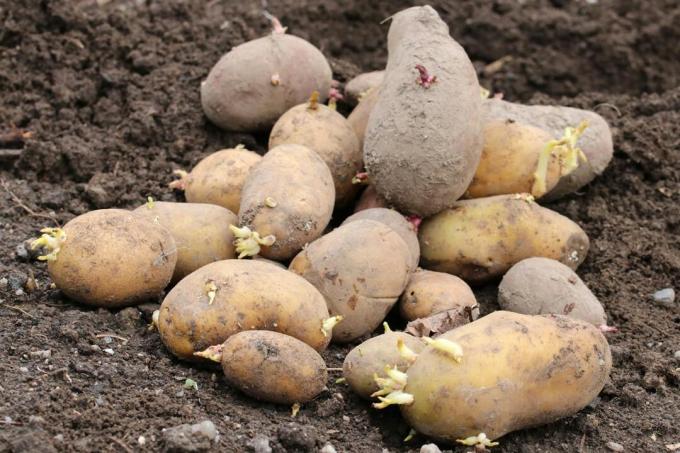
Table of contents
- Mixed culture for more yield
- Good plant neighbors A – K
- Good plant neighbors M – Z
- crop rotation
Rows of potato plants are common in allotments. But potato cultivation is more efficient in mixed cultivation! We present 14 plants that get along well with potatoes and have a yield-boosting effect.
Mixed culture for more yield
For generations, allotment gardeners and farmers have relied on mixed cultivation when cultivating crops. Different plants on an area influence each other. This influence can have a positive as well as a negative effect on plant health and yield.
Advantages of mixed culture:
- Bed areas are optimally used
- positive influence on soil quality
- pest control
- Attracting pollinating insects
- Reducing soil leaching
- Protection against dehydration
- Reduction of weeds
Good plant neighbors A – K
cauliflower(Brassica oleracea)
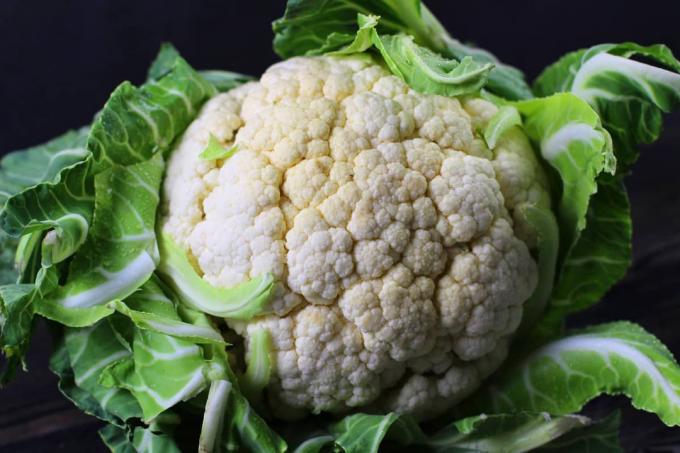
Cauliflower and potatoes make a good team. They have similar needs. The two heavy feeders should not be grown in the same location for several years.
beans(Phaseolus vulgaris)

Green beans, broad beans, red beans and even runner beans harmonize perfectly in a bed with potato plants. They have similar requirements and do not get in each other's way above or below ground.
borage(Borago officinalis)

Plant borage around the edges of the potato beds. The plant with the blue flowers attracts bees and beneficial insects and improves the soil.
dill(Anethum graveolens)

Dill supports potato plants in their growth. The popular kitchen herb increases the germination rate of the potatoes and successfully fends off pests and fungal diseases.
Nasturtium(Tropaeolum majus)

The nasturtium with the bright flowers is pretty to look at. It attracts pollinators and keeps aphids away.
Garlic(Allium sativum)
Garlic and potatoes do well together in a bed. Garlic protects the potato plants from fungi and repels voles.
coriander(Coriandrum sativum)
Coriander attracts beneficial insects and successfully repels pests such as the Colorado potato beetle. Sow cilantro between the rows of potatoes.
A notice:
Check your potato plants regularly for Colorado potato beetles and collect them immediately.
Caraway seeds(Carum carvi)

If you sow caraway between the rows of potatoes, you can look forward to particularly tasty tubers. Just like coriander, cumin enhances the taste when mixed with potatoes.
Good plant neighbors M – Z
horseradish(Armoracia rusticana)
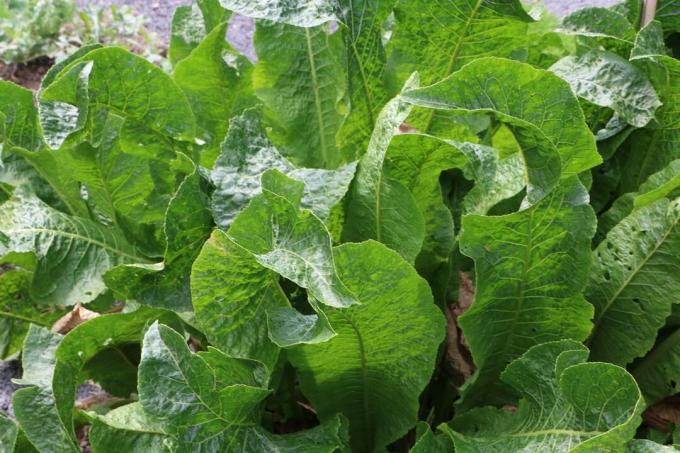
peppermint(Mentha x piperita)

Peppermint planted between the potatoes creates a carpet of greenery that prevents the bed from drying out. Use planter baskets to prevent peppermint from spreading uncontrollably. Peppermint's purple flowers attract bees, butterflies, and beneficial insects.
marigold(Calendula officinalis)

Don't forget to sow some marigolds in the garden. The attractive flower is compatible with all types of vegetables and promotes their growth. Wireworms and nematodes are successfully repelled by marigolds. Butterflies, bees and bumblebees will visit your beds all the more often.
shallots(Allium cepa var. ascalonicum)
Shallots are the noble alternative to ordinary kitchen onions. They have similar location requirements as potatoes.
chives(Allium schoenoprasum)

Chives should not be missing in any vegetable garden. The violet flowering chives magically attract bees and beneficial insects. Colorado potato beetles, on the other hand, can't stand the popular kitchen herb. Sow chives between the potatoes and the pests stay away.
marigold(tagetes)

Marigolds are not very popular because of their unpleasant smell. The reason they are still commonly found in gardens is their deterrent effect on pests. Tagetes repels nematodes, whiteflies and the wireworms dreaded by potato lovers. Planting marigolds between potatoes prevents late blight.
crop rotation
For three-year crop rotation, we recommend starting with potatoes heavy feeders (cauliflower), then with medium eaters (garlic) and third year with weak feeders (beans, herbs) to combine. This is followed by green manure with savory or lucerne and the soil can recover.
 Home editorial office
Home editorial office
Learn more about potatoes
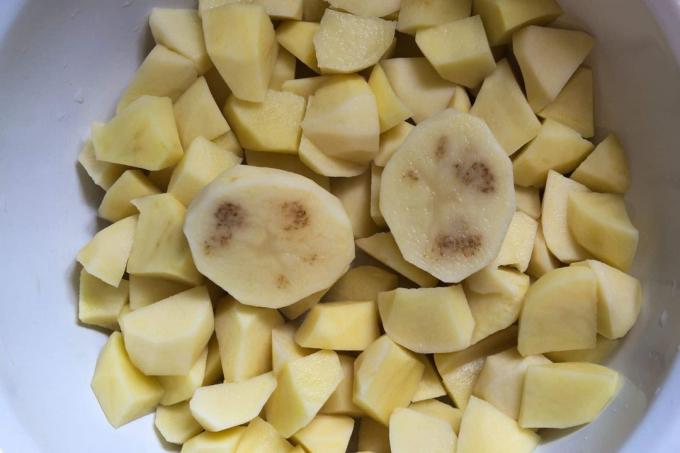
Potato is brown inside: is it edible?
After peeling or cooking, a potato has brown to black spots on the inside. This doesn't look very appetizing at first. And above all, the question arises as to whether the potato is still suitable for consumption or not. Since the causes of this discoloration can vary, in some cases it is due to […]

Black spots on potatoes: still use them?
Potatoes can have black spots. The potatoes are almost always edible despite the black spots. However, affected potatoes may show changes in taste and texture.
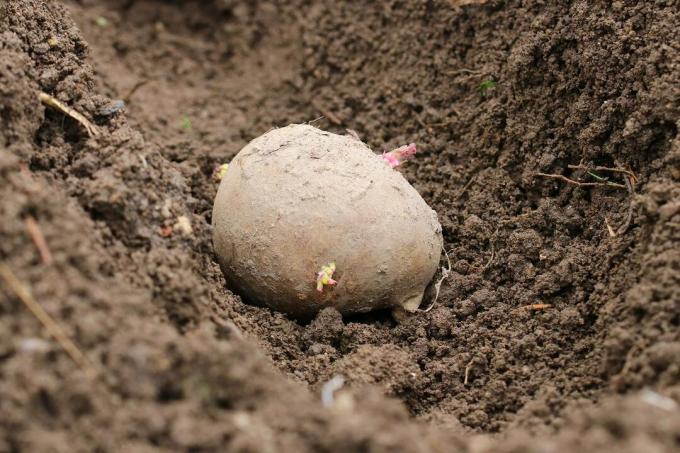
Time: from and until when do you plant potatoes?
Potatoes are among the most widely grown vegetables. So that self-cultivation works and a lush harvest can be brought in over many months, self-cultivators should pay attention to one important point: the right time to plant.

Planting potatoes: distance and depth
The potato (Solanum tuberosum) is a staple food with a wide range of preparation options. The tubers are indispensable in many dishes and are tastiest when you pick them yourself. What could be more obvious than growing them yourself. You can do this without your own garden.

Laying potatoes: ideal spacing and depth
Potatoes are good for the vegetable garden because they prepare the soil optimally for subsequent vegetables. They can also be stored for a long time and can be prepared in a variety of ways. You can read here which spacing is the right one for laying potatoes.

Storing & Cellaring Potatoes | 10 tips for storing potatoes
The potato is one of the most traditional vegetables in this country and can hardly be surpassed in terms of culinary variety. Anyone who grows them in their own garden can benefit from a huge variety of varieties and, if stored appropriately, can benefit from them for a long time.


